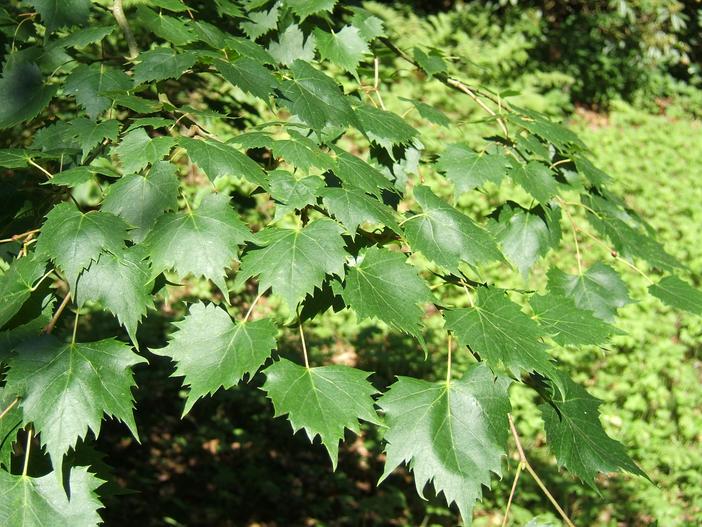Mongolian Lime
(Tilia mongolica)
Mongolian Lime (Tilia mongolica)
/
/

MPF
CC BY 2.5
Image By:
MPF
Recorded By:
Copyright:
CC BY 2.5
Copyright Notice:
Photo by: MPF | License Type: CC BY 2.5 | License URL: https://creativecommons.org/licenses/by/2.5 | Uploader: MPF | Publisher: Wikipedia Commons
















Estimated Native Range
Summary
Tilia mongolica, commonly known as Mongolian Lime, is a deciduous tree native to the forests and forest-steppe zones of Northern and Eastern China and Manchuria. It is a small, slow-growing species with a rounded, compact habit, typically reaching less than 10 meters in height. The dense, twiggy growth and glabrous reddish shoots bear distinctive leaves that are 4–7.5 cm long, coarsely toothed with 3–5 lobes, and superficially resemble ivy or maple leaves. The emergent leaves are bronze, turning glossy green in summer, and bright yellow in autumn, providing seasonal interest. The greenish-white flowers, which are not particularly showy, are borne in clusters of 6–20 in June and July, and they are followed by small, inconspicuous nutlets.
Mongolian Lime is valued for its compact size and attractive foliage, making it suitable for small gardens, urban landscapes, and as a specimen tree. It is adaptable to a range of soil types, provided they have good drainage, and it thrives in full sun to part shade. While it is not drought-tolerant, it does require only moderate watering once established. This tree is relatively low-maintenance, but it can be susceptible to aphids and Japanese beetles. It is not commonly known to have aggressive roots or other significant problems. Due to its slow growth rate, it is less commonly used in cultivation compared to other Tilia species, but it can be a unique addition to a diverse garden setting.CC BY-SA 4.0
Mongolian Lime is valued for its compact size and attractive foliage, making it suitable for small gardens, urban landscapes, and as a specimen tree. It is adaptable to a range of soil types, provided they have good drainage, and it thrives in full sun to part shade. While it is not drought-tolerant, it does require only moderate watering once established. This tree is relatively low-maintenance, but it can be susceptible to aphids and Japanese beetles. It is not commonly known to have aggressive roots or other significant problems. Due to its slow growth rate, it is less commonly used in cultivation compared to other Tilia species, but it can be a unique addition to a diverse garden setting.CC BY-SA 4.0
Plant Description
- Plant Type: Tree
- Height: 25-35 feet
- Width: 15-25 feet
- Growth Rate: Moderate
- Flower Color: Yellow, White
- Flowering Season: Summer
- Leaf Retention: Deciduous
Growth Requirements
- Sun: Full Sun, Part Shade
- Water: Medium
- Drainage: Slow, Medium, Fast
Common Uses
Bee Garden, Bird Garden, Butterfly Garden, Edible*Disclaimer: Easyscape's listed plant edibility is for informational use. Always verify the safety and proper identification of any plant before consumption., Fragrant, Low Maintenance
Natural Habitat
Forests and forest-steppe zones of Northern and Eastern China and Manchuria
Other Names
Common Names: Mongollind
Scientific Names: , Tilia mongolica,
GBIF Accepted Name: Tilia mongolica Maxim.